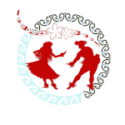In Tahitian dance (‘Ori Tahiti), Ha’amenemene refers to a graceful and expressive movement or gesture associated with gentleness, affection, and charm. This movement often highlights the dancer’s ability to convey emotions through fluidity and subtlety, adding a tender and heartfelt dimension to performances.
Understanding Ha’amenemene
- Translation: The term ha’amenemene can be interpreted as “to caress” or “to express tenderness,” reflecting its soft, flowing nature.
- Technique:
- The movement involves slow, smooth, and deliberate motions, often focused on the hands, arms, and upper body.
- Hand gestures are typically soft and rounded, with a gentle touch, as if caressing the air or symbolically expressing love, care, or admiration.
- The hips may complement the upper body’s fluidity with gentle sways or subtle fa’ahe’e motions to maintain harmony between the upper and lower body.
Role in Tahitian Dance
- Emotional Expression:
- Ha’amenemene is used to depict themes of love, kindness, or the beauty of nature. It allows the dancer to connect emotionally with the audience.
- The movement is especially common in ‘aparima, the storytelling dance, where it helps illustrate tender moments in a narrative.
- Feminine Grace:
- This movement is associated with softness and elegance, showcasing the dancer’s ability to embody delicate and nurturing qualities.
- Symbolism and Connection:
- Ha’amenemene reflects Polynesian values of community, love, and respect for nature and others. It symbolizes openness and positive energy.
Usage in Dance Styles
- ‘Aparima (Storytelling Dance):
- This movement often plays a central role, illustrating stories of love, relationships, or the natural world with a tender and heartfelt tone.
- ‘Ōte’a (Fast-Paced Dance):
- While less prominent, elements of ha’amenemene may appear in transitional moments or slower sections to create contrast and balance.
Training and Mastery
- Fluidity and Control:
- Dancers must practice to achieve seamless, flowing motions that embody the tenderness of ha’amenemene without abruptness or rigidity.
- Facial Expressions:
- The emotional resonance of this movement is enhanced by soft and sincere facial expressions, conveying warmth and affection.
- Integration:
- It is often paired with other gestures or hip movements, requiring coordination and an ability to maintain a harmonious flow throughout the performance.
Examples of Usage
- A dancer may use ha’amenemene to mimic the act of offering flowers, a common motif in Tahitian dance, symbolizing love and beauty.
- In a romantic or ceremonial dance, it might represent the act of embracing or cherishing someone or something, such as the ocean, land, or a loved one.
